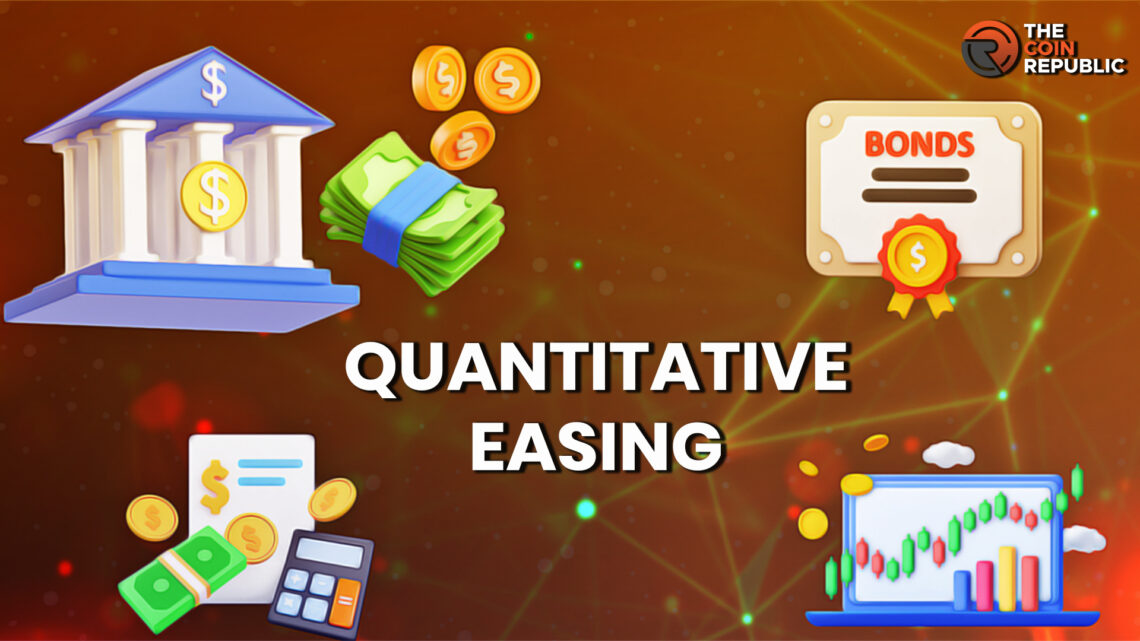- 1 Quantitative Easing keeps interest rates in check while bringing money into the economy.
- 2 The US Federal Reserve and many other nations take this measure in needful times.
- 3 Experts evaluate this practice and give a brief account of its pros and cons.
Quantitative Easing (QE) is a practice deployed by central banks to reduce interest rates and raise liquidity. In a typical QE scenario, the US Federal Reserve buys securities from open markets. They also review and implement the policies. It keeps the money flowing into the system and brings stability. Moreover, it encourages lending and investment while creating new bank reserves.
Get Insights into Quantitative Easing
Mostly, the feds take this measure when economic growth is stalled with interest rates nearing zero. At this point, it’s essential to understand the tools that central banks use to stabilize the economy. They mostly resort to tweaking interest rates while sometimes engaging in buying/selling instruments. The latter is done to increase the money supply and that’s exactly what’s done in QE.
Central banks mostly buy government bonds and securities to funnel bank reserves into the economy. They purchase these instruments from other banks that cascade this money to people. Recently, it happened during the COVID times, to be precise, in 2021. Back then, the Federal Reserve raised its holdings and bought securities from the market.
Furthermore, the Federal Reserve can only affect the supply of money in the economy. It’s the US Treasury Department that creates new money and implements taxes. The latter also takes care of fiscal policies while sending money directly or indirectly into the economy. Quantitative easy tackles fiscal policy as well as monetary objects that impact the markets.
Does Quantitative Easing Really Help the Economy?
A large number of economists believe that it does. In fact, they say that QE helped the US to a great extent in the 2008 recession. However, it’s hard to evaluate if those measures helped the country beat the odds or not. Across the globe, central banks have utilized this method to overcome deflation and recession. It should be noted that QE is helpful in injecting money and bringing temporary relief.
Although economists haven’t seen its broader impact, the entities that get the most from this practice are borrowers and investors. That being said, QE has its share of risks too.
Some Risks of Quantitative Easing
Inflation
In some cases, QE can trigger inflation and even stagflation. The latter refers to the concurrence of unemployment and inflation. They both take place, resulting in a raised money supply.
Limited Lending
Even when the money is flown, the Feds can’t force banks to go on a lending spree. It also can’t force people to borrow money from the banks. Since the money is provided after inflation is set in, individuals and companies already started avoiding loans.
Devalued Currency
When the money supply increases, the value of domestic currency decreases. While it is helpful for the exporters, it makes things difficult for importers. It results in increased cost of production and consumer price levels.
While its merits and risks are debatable, QE definitely helps economies in tough times. That’s why the most developed countries are prone to implementing it. Even without a profound impact, this stopgap solution brings instant relief to struggling markets.

Andrew is a blockchain developer who developed his interest in cryptocurrencies while pursuing his post-graduation major in blockchain development. He is a keen observer of details and shares his passion for writing, along with coding. His backend knowledge about blockchain helps him give a unique perspective to his writing skills, and a reliable craft at explaining the concepts such as blockchain programming, languages and token minting. He also frequently shares technical details and performance indicators of ICOs and IDOs.


 Home
Home News
News






